Cork Tourist Attractions and Sightseeing
(Cork, County Cork, Republic of Ireland)
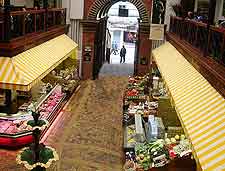
Due to its long history, Cork has many heritage structures and historic tourist attractions, mostly from the Georgian period of the 18th and early 19th centuries. Originally founded as a monastic settlement in the 6th century by St. Finbarr, Cork became urban in the 10th century when invading Vikings established a port, the ancestor of today's massive harbour, to serve their international trade network.
Remnants of medieval times include parts of the city walls and gates, as well as the Red Abbey, a notable attraction in its own right. Two cathedrals, plus a plethora of Georgian terraces and beautiful churches, compete for attention with notable early 20th-century buildings and more modern structures. Tourists will find many other attractions in Cork, such as the English Market, several breweries, a vibrant cultural scene and the surrounding quaint and ancient towns.
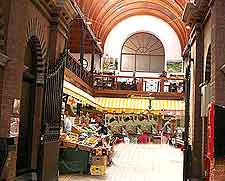
English Market
Address: Princes Street / Grand Parade, Cork, Republic of Ireland
The English Market is housed in a custom-built 19th century structure, which replaced the original 1788 building. The largest indoor market in
Ireland, this attraction serves as a major draw for its fresh foods, locally caught fish and County Cork gourmet specialities, such as spiced beef, all popular with chefs from the city's top restaurants. This is a good place to come for a lunchtime treat or simply a quick coffee.
Open hours: Monday to Saturday - 09:00 to 17:30
Admission: free
Skiddy's Almshouses Shandon
Address: Bob and Joan's Walk, Shandon, Cork, Republic of Ireland
This peaceful quadrant, with its fine stone arcades, was built in 1718 thanks to a generous donation by a successful son of the city, who made his fortune as a wine merchant in
London. The intended recipients of his generous gift were 'honnestest poorest persons' aged 50 years and over. Skiddy's Almshouses Shandon is a well-preserved listed attraction and remains one of Ireland's oldest and most important civic buildings.
Open hours: daily - 14:00 to 16:00, gardens and grounds
Admission: free
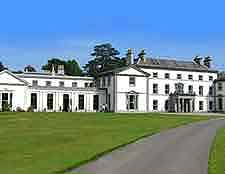
Fota House
Address: Fota Island, Cork, Republic of Ireland
Located on Fota Island, this grand country mansion and grounds date from the 18th century and has been added to during the early 19th century. The richly decorated interior boasts ornate gilded ceilings and 19th-century silk wallpaper, and the grounds feature walled gardens, stables, parkland, an arboretum and woods.
Open hours: daily - 10:00 to 17:00, including gardens and grounds
Admission: charge
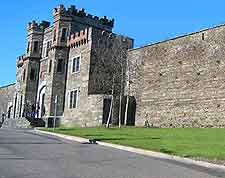
Cork City Gaol Heritage Centre
Address: Convent Avenue, Sunday's Well, Cork, Republic of Ireland
Tel: +353 021 430 5022
Set in a spooky listed building, this somewhat touristy centre nevertheless manages to give an eerie glimpse of 19th-century prison life, including original graffiti on cell walls, and wax figures of inmates and gaolers. An audio-visual presentation sets the mood and explains the reasons why people living in 19th-century Cork turned to a life of crime. The main attractions are further enhanced by a gift shop and cafe, while personal guided tours can also be arranged.
Open hours: daily, March to October - 09.30: to 17:00; November to February 10:00 to 16:00
Admission: adults charge, discounts for seniors, students and children
Huguenot Quarter
Address: French Church Street to Carey Lane, Cork, Republic of Ireland
In excess of 300 Protestant Huguenots fled persecution in France, arriving in Cork in the 17th and 18th centuries and settling in this area. A memorial to these migrants has been erected in the Huguenots' graveyard, which features 17th-century gravestones with interesting inscriptions.
Open hours: daily
Admission: free
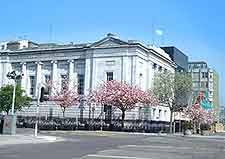
South Mall
Address: South Mall, Cork, Republic of Ireland
South Mall serves as the city's old Financial Centre and contains a number of fine 19th-century buildings with attractive period interiors. The street was once a river channel, and many buildings have preserved their ground-floor boathouses. Of particular note are numbers 53 and 73, which were constructed with Dutch bricks used as ballast on trading ships.
Open hours: daily
Admission: free
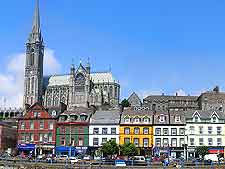
Cobh
Address: Cork Harbour, Cork, Republic of Ireland
The colourful harbourside town of Cobh dominates the massive natural harbour east of Cork City, being just a matter of minutes away. The spires of St. Colman's Cathedral overlook this pretty town and form an eye-catching sight, along with the two islands of Spike and Haulbowline, for ships approaching the deep-water port. Cobh is a hub for cruise ships and has hosted the QE2 on many occasions.
Open hours: daily
Admission: free
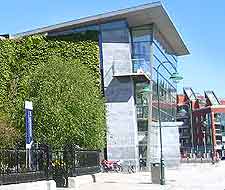
Opera House
Address: 1 Emmet Place, Cork, Republic of Ireland
Tel: +353 021 427 0022
Located in-between Lavitt's Quay and Merchant's Quay, the city's Opera House comes with a long history, being born as the 'Athenaeum' in 1855. Exactly 100 years later, fire destroyed the predominantly wooden building and it was not until 1963 that rebuilding work commenced, and more recently in 2003, much renovation and reconstruction saw something of a modern facelift for the building. Although this theatre is officially named the Opera House, many different events are staged here all through the year, including concerts, plays, musicals, comedy gigs, exhibitions, film screenings and a seasonal panto, to audiences of just under 600 people.
Open hours: box office, Monday to Saturday - 12:00 to 17:30, Sundays from 18:00 on performance nights
Admission: charge
 Due to its long history, Cork has many heritage structures and historic tourist attractions, mostly from the Georgian period of the 18th and early 19th centuries. Originally founded as a monastic settlement in the 6th century by St. Finbarr, Cork became urban in the 10th century when invading Vikings established a port, the ancestor of today's massive harbour, to serve their international trade network.
Due to its long history, Cork has many heritage structures and historic tourist attractions, mostly from the Georgian period of the 18th and early 19th centuries. Originally founded as a monastic settlement in the 6th century by St. Finbarr, Cork became urban in the 10th century when invading Vikings established a port, the ancestor of today's massive harbour, to serve their international trade network.




